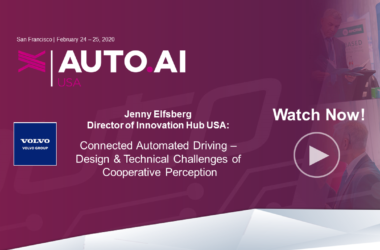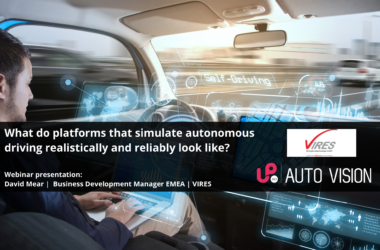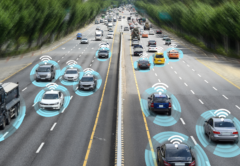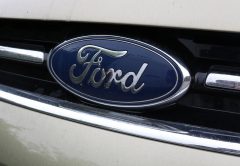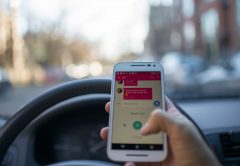From traditional GPS makers like TomTom to startups and a cornucopia of others, High Definition maps are being developed and refined for driverless cars. But with so many sensors already on the car, what else can HD maps do? Can they help cars see what sensors might miss? Will they accelerate AV development and get us to deployment faster?
“As maps start to become ubiquitously used, you will start to see that these other sensors are not nearly as required as they once were,” said David Craig, chief of maps for General Motors. “And as the maps start to become more trusted and the accuracy goes up and up, maybe even 99.99%, you start to reduce the need for this double and triple redundancy.”
Thus, in time, Craig believes other sensors “will start to be reduced in their count as the maps get better, even beyond where we are today.” And that leads to something every driverless car developer is after: lower costs.
“You think about it as these crazy expensive LiDARs start to get reduced in count, maybe even go away completely,” Craig explained. “Yes, significant reduction – not only in the cost but even better acceptance from the user point of view that these no longer look like deformities of cars with warts everywhere.”
Most LiDAR units are quite large, taking up a notable chunk of the roof of every vehicle in which they are installed. Other sensors are equally noticeable. While the underlying technology might be important, their presence has certainly had a visual impact.
“Every time you add in new attributes into the map that is usable to the controller, what you’re doing is offsetting what a sensor has to do – what a sensor has to see and find,” said Craig. “As we move forward with understanding how autonomous vehicles need to operate and how to work, then what we do is identify each of these variables that we need as an input. We assign those to: can a sensor detect them or can a map detect them or can both detect them? And the ones that can be done via map, then you do that because anything you can do in a map is definitely cheaper than doing it real-time in a car.” HD mapping is not a flawless technology, however. There are still many things it cannot accomplish, such as providing real-time info on immediate road hazards.
“The onboard sensors would be required to do that,” Craig affirmed. “In the future, the hope is that V2V starts to bear the major brunt of that force – you know, instantaneous changes. Whether it’s congestion, traffic, an obstacle, road construction – that’s where the hope that V2V and V2X is going to come into play.”
As HD maps advance and become more up-to-date – and provide info that’s as close to real-time as possible – Craig believes the technology will be capable of taking on that challenge. “But you’re always going to have that first car that drives into that scenario that’s going to relay what the sensors detect,” he said, further highlighting the importance of vehicle-to-vehicle communication.
About the author:
Louis Bedigian is an experienced journalist and contributor to various automotive trade publications. He is a dynamic writer, editor and communications specialist with expertise in the areas of journalism, promotional copy, PR, research and social networking.


